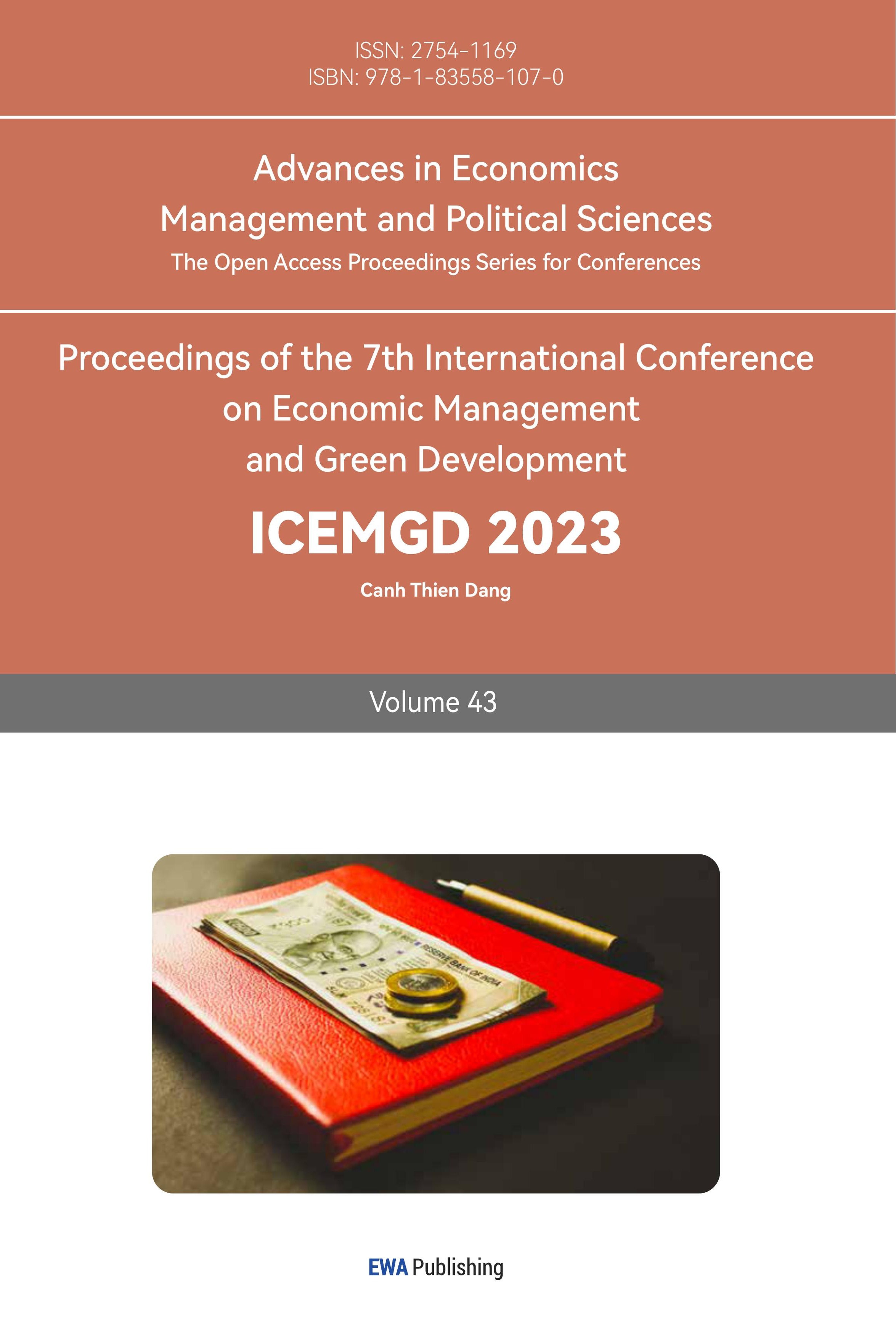References
[1]. W Zhong. (2005). Fed rate hikes, capital flows and the yuan exchange rate. The World Economy (03), 10-16.
[2]. D Chen & P Chen. (2023). A Study of the economic impact of the Fed rate hike cycle. Western Finance (04), 45-49.
[3]. S Li, Q Zhang, and Y Li (2022). This round of us inflation development trend and its impact on China. China prices (07), 27-30.
[4]. D Wang & R Yu (2023). The spillover effect of the Federal Reserve rate hike and the impact analysis on China's exchange rate and cross-border capital flow. Tsinghua Financial Review (02), 53-56.
[5]. B Wu (2023). Behind the Fed's "dovish" rate hike. The 21st Century Business Herald, 003.
[6]. Y Zhao (2020). China's science and technology innovation board market and the US NASDAQ market comparison. National Circulation economy (09), 104-105.
[7]. C Jiang (2017). Following the US interest rate hike, why does the Hong Kong dollar still depreciate? https://m.gelonghui.com/p/132295?ivk_sa=1024320u
[8]. X Xu (2023). How much of the Fed's continued interest rate increases is. Economic Daily, 009.
[9]. Z Lin (2022). The dollar is capricious and the euro is unbearable. People's Daily Overseas Edition, 006.
[10]. Q Wu (2023). Analysis of the spillover effect of the Federal Reserve rate hike on our economy. China prices (03), 17-20.
[11]. R Yu & D Wang (2023). Wind blows wrinkled water: How the Federal Reserve raises interest rates will affect China's exchange rate and cross-border capital flows. Financial Market Research (01), 117-124.
[12]. Y Chen. (2022). The impact of the Fed rate hike on RMB interest rates and exchange rates. Modern Commerce (29), 31-35.
Cite this article
Liu,Q. (2023). The Monetary Market Uncertainty, Reasons and Consequence of Financial Market. Advances in Economics, Management and Political Sciences,43,169-175.
Data availability
The datasets used and/or analyzed during the current study will be available from the authors upon reasonable request.
Disclaimer/Publisher's Note
The statements, opinions and data contained in all publications are solely those of the individual author(s) and contributor(s) and not of EWA Publishing and/or the editor(s). EWA Publishing and/or the editor(s) disclaim responsibility for any injury to people or property resulting from any ideas, methods, instructions or products referred to in the content.
About volume
Volume title: Proceedings of the 7th International Conference on Economic Management and Green Development
© 2024 by the author(s). Licensee EWA Publishing, Oxford, UK. This article is an open access article distributed under the terms and
conditions of the Creative Commons Attribution (CC BY) license. Authors who
publish this series agree to the following terms:
1. Authors retain copyright and grant the series right of first publication with the work simultaneously licensed under a Creative Commons
Attribution License that allows others to share the work with an acknowledgment of the work's authorship and initial publication in this
series.
2. Authors are able to enter into separate, additional contractual arrangements for the non-exclusive distribution of the series's published
version of the work (e.g., post it to an institutional repository or publish it in a book), with an acknowledgment of its initial
publication in this series.
3. Authors are permitted and encouraged to post their work online (e.g., in institutional repositories or on their website) prior to and
during the submission process, as it can lead to productive exchanges, as well as earlier and greater citation of published work (See
Open access policy for details).
References
[1]. W Zhong. (2005). Fed rate hikes, capital flows and the yuan exchange rate. The World Economy (03), 10-16.
[2]. D Chen & P Chen. (2023). A Study of the economic impact of the Fed rate hike cycle. Western Finance (04), 45-49.
[3]. S Li, Q Zhang, and Y Li (2022). This round of us inflation development trend and its impact on China. China prices (07), 27-30.
[4]. D Wang & R Yu (2023). The spillover effect of the Federal Reserve rate hike and the impact analysis on China's exchange rate and cross-border capital flow. Tsinghua Financial Review (02), 53-56.
[5]. B Wu (2023). Behind the Fed's "dovish" rate hike. The 21st Century Business Herald, 003.
[6]. Y Zhao (2020). China's science and technology innovation board market and the US NASDAQ market comparison. National Circulation economy (09), 104-105.
[7]. C Jiang (2017). Following the US interest rate hike, why does the Hong Kong dollar still depreciate? https://m.gelonghui.com/p/132295?ivk_sa=1024320u
[8]. X Xu (2023). How much of the Fed's continued interest rate increases is. Economic Daily, 009.
[9]. Z Lin (2022). The dollar is capricious and the euro is unbearable. People's Daily Overseas Edition, 006.
[10]. Q Wu (2023). Analysis of the spillover effect of the Federal Reserve rate hike on our economy. China prices (03), 17-20.
[11]. R Yu & D Wang (2023). Wind blows wrinkled water: How the Federal Reserve raises interest rates will affect China's exchange rate and cross-border capital flows. Financial Market Research (01), 117-124.
[12]. Y Chen. (2022). The impact of the Fed rate hike on RMB interest rates and exchange rates. Modern Commerce (29), 31-35.









